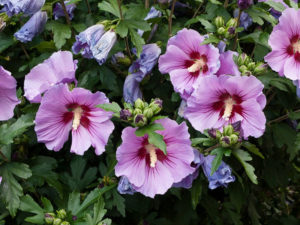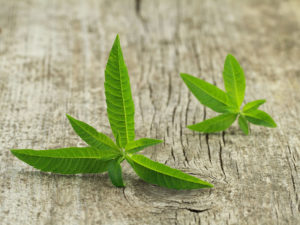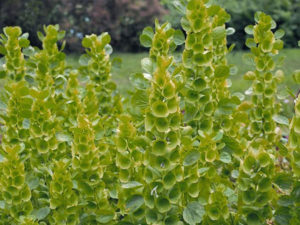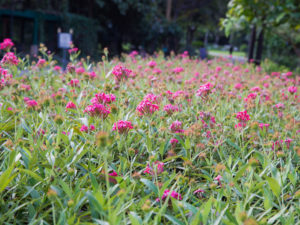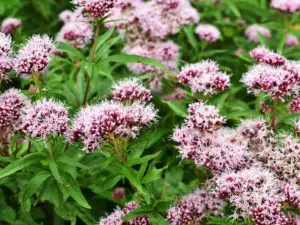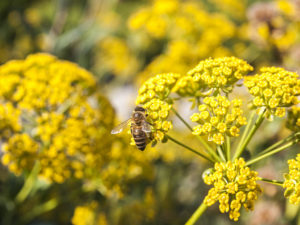The Rhubarb plant’s scientific name is Rheum Rhabarbarum.
It is commonly known as the pie plant.
This is a hardy perennial plant belonging to the smartweed family called Polygonaceae, native to Asia.
The Rhubarb flower is mainly grown for its large edible petioles or leafstalks for various types of consumption.
When it comes to climatic conditions, Rhubarb is commonly grown in cool areas of temperate zones.
The plant has a fleshy, tart-like, and highly acidic, leaf stalk.
These stalks work as the main ingredient in pies, in compotes and preserves, and sometimes as the base of a wine or an aperitif.
However, the leaves contain toxins, such as oxalic acid, and can cause serious health defects when ingested.
The Rhubarb flower is usually greenish-white in color and sometimes used as an ornamental piece along with its beautiful, vibrant red stalks and wide green leaves.
The tiny individual flowers make up the head and do not contain any oxalic acid, the substance that makes Rhubarb so sour, but the flower stem does.
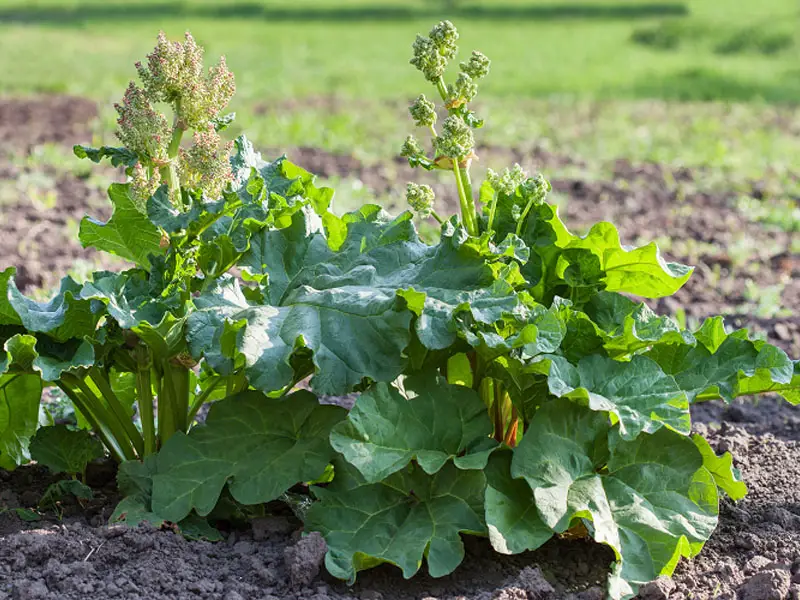
| Scientific Name | Rheum Rhabarbarum |
| Common Names | Pie Plant |
| Hardiness | USDA 6 and higher |
| Indoor or Outdoor Plant? | Outdoor |
| Sun Exposure | Full sun to partial shade |
| Water | Regular watering |
| Size | 2- 4 feet |
| Soil Type | Moist but well-drained |
| Soil pH | 6.0 to 6.8 |
| Flower | green, red |
| Growing Difficulty Level | Difficult |
Rhubarb Flower Appearance and Characteristics
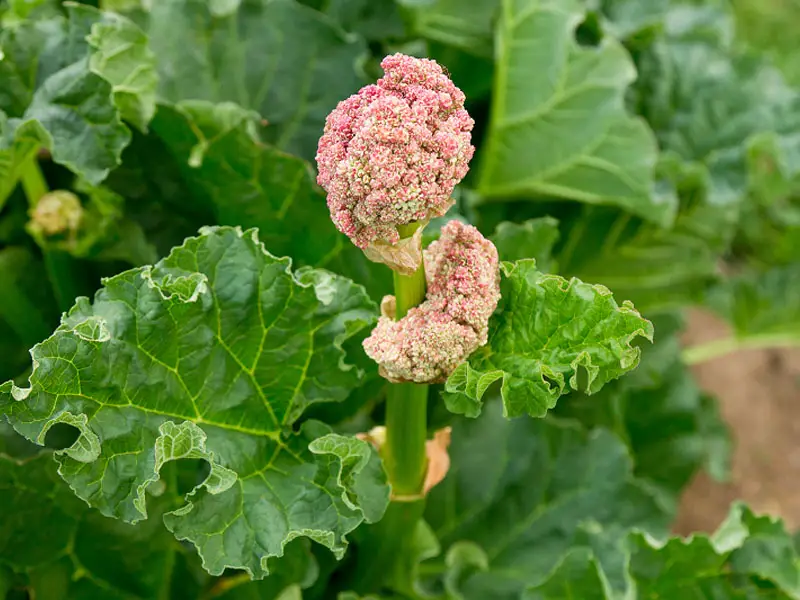
The Rhubarb plant itself produces large clumps of enormous leaves, measuring up to 60 cm or 2 feet across.
These leaves are borne on proportionately large petioles.
These petioles arise from an underground stem, measure 25 mm or more in diameter, and go up to 60 cm in length.
It is a herbaceous perennial plant growing between 2 to 4 feet tall.
The plant itself grows from large, fleshy reddish-brown rhizomes that have yellowish interiors.
The Rhubarb plant has hollow flower stalks that emerge in the summer season directly from the crown.
You may find a few small sessile leaves along the length of the stem.
In the individual branched inflorescence, you will find numerous small greenish-white flowers in clusters.
Within each, you will discover six tepals and usually nine stamens that have yellow or pinkish green, elliptical anthers, and three styles.
Additionally, it has angular winged fruits usually containing one seed each.
They do not split open when ripe.
Unless you have a need for the flower, you should trim them regularly.
The main reason is that the Rhubarb flowering affects stem production, which is the main source of consumption.
You should promptly pull and discard the flower stalks as they take a lot of energy to produce, reducing plant vigor and next year’s production.
The flower-stalk formation is usually caused by drought, infertile soil, and arid heat.
You can discourage flower formation by regularly watering the plant in the summer, good fertility, and mulching around the base to keep the soil cool and moist.
Of all the parts, only the stalks of the Rhubarb plant are edible.
The leaves contain oxalic acid and other harmful compounds that are severely damaging to the mouth and digestive system if eaten.
That is why you should immediately remove the leaves from the stalks after harvest.
Rhubarb Flower Growing Guide
Rhubarb grows really fast, but it takes a lot of care.
To prevent overseeding and overflow of flowers that reduce harvest, you must constantly clear out the plant and check the soil moisture for healthy production.
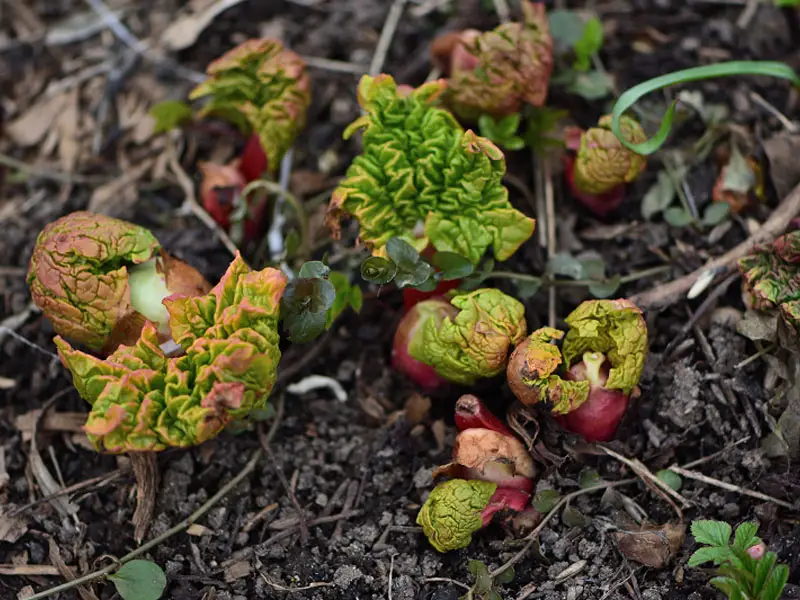
Water
Rhubarb needs regular watering during prolonged dry periods in the summer.
If there is insufficient water, then the plant experiences slow growth.
This is a common occurrence in hot or dry climates.
You should keep the plant in containers that have good drainage to prevent waterlogging throughout the growing season as they dry out much more readily.
You can apply some mulch to retain the moisture of the soil.
This will also boost the growth during the spring or summer.
Light
The ideal conditions for the Rhubarb plant to thrive are open, sunny sites with lots of sun and light.
If you live in very cold areas, you have to take greater care as frost can kill your plant.
So make sure to choose a good west-facing direction, with plenty of sun.
While the Rhubarb plant grows best in full sun, it also tolerates partial shade.
Soil
The Rhubarb plant needs rich organic soil, so apply a mulch of well-rotted garden compost during the spring.
If it is in a layer of about 7cm or 2½ inches deep, it is even better.
Do this around the plant but do not bury the crown.
The mulch retains the moisture in the soil.
If you want the highest yields of Rhubarb stems, then fertilize your plants three times a year.
Temperature and Humidity
The Rhubarb plant grows best in cool weather below 75° F, mainly during springtime.
Based on the region, Rhubarb plants grow during April or May and sometimes even throughout the summer.
You can even grow it indoors or in a hothouse.
Once you allow the foliage to die naturally in autumn, cut away the old leaves and expose the growing points to winter cold.
Add the dead leaves to the compost heap, as the poisonous oxalic acid in them breaks down during decomposition.
It essentially needs 7-9 weeks of cold weather below 3°C (37°F).
Potting and Repotting
You should plant the Rhubarb roots about 3 feet apart.
You must keep the buds about 2 inches below the soil surface.
You should only harvest the stalks in the second or third year, by which time the roots can establish themselves.
Once spring arrives and growth begins, fertilize the established plants and repeat again in the summer after harvest.
Remove the flower stalks as soon as they appear to keep the leaves growing strongly.
Also, mulch in the winter after the ground freezes to avoid heaving.
Ensure that each plant has enough time to build up food reserves in the root so that it can produce thick, robust stems.
In the second year, harvest the older leaf stalks by grasping them at the lower end, close to the main part of the plant.
Ensure that you pull down and to one side as this enables the stalk to snap off clean.
Keep some leaves on the plant to prevent depletion of the plant’s food reserves.
Propagating and Pruning
Rhubarb, if allowed to flower through, develops a lot of seeds.
It can, of course, be propagated through seeds, but it is mainly done by divisions taken in spring, about 4 to 6 weeks before the average date of the last frost.
Cut up the crown into pieces with a spade or shovel, leaving at least one strong bud for each piece. Rhubarb plants grown from seeds are slower and have more variables than crowns.
Sow the seeds in March or April, either indoors or in the ground. Weed and rake the sowing site; sow seeds 1in deep, thin out the seedlings to 6in apart.
Water well, and regularly. When they are ready for harvest, do not prune all the leaves as this might deplete their energy.
Advantages of Growing Rhubarb Flower
When it comes to aesthetic uses, the large leaves of Rhubarb stand out, and so do the flowers.
So if you have a sunny flower bed with other ornamental Rheum species, you can subtly incorporate this edible plant into the garden.
Since it is a perennial plant, it will remain in the ground for several years.
So you don’t have to plant it all the time. Just make sure to keep it on an undisturbed site and on raised beds for good drainage.
Its main usage is as food.
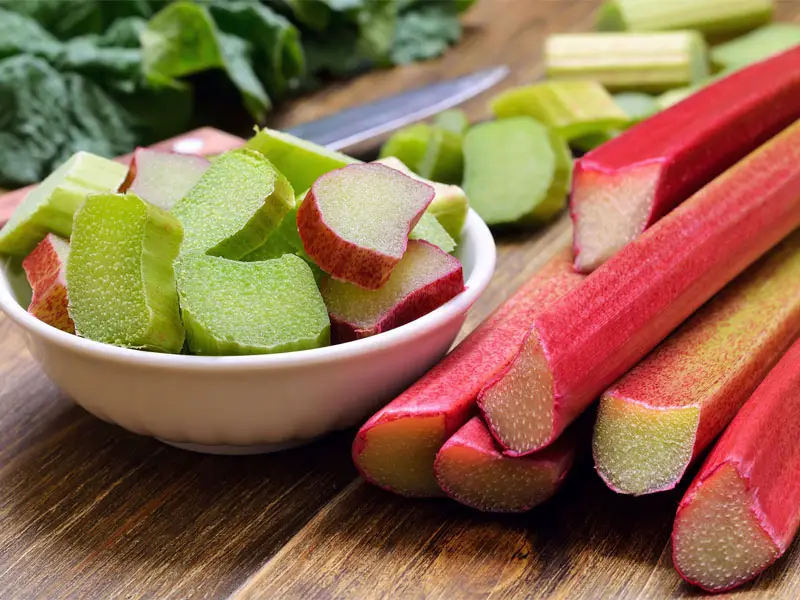
It is popularly used for making jam or sauces.
It is also used as a key ingredient in pies or desserts as well as an accompaniment to savory foods.
The Rhubarb is tart, so it always needs to have sugar to balance the flavor.
If you like dishes with a sour element, the Rhubarb can act as a great replacement for vinegar or lemon juice.
The flower head does contain a part of the stem and, therefore, some oxalic acid, no matter how careful you are, so never have excessive amounts of flower heads.
Rhubarb Flower Pests, Diseases, and Problems
Some common issues faced by this plant are crown rot and snail or slug infestation.
Various soil- or water-borne fungi and bacteria make the plants sick, affecting their growth and causing them to rot at the crown.
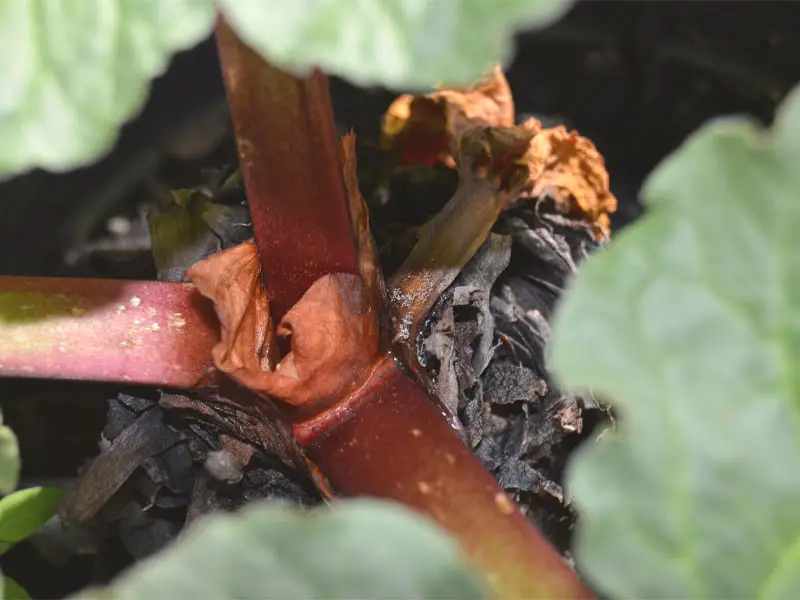
Cut away the affected areas into healthy tissue.
You can use beer traps, sawdust or eggshell barriers, and copper tape, and biocontrols for the slugs and snails.
Rhubarb Flower Seeds
You can find some of the best quality seeds on Amazon.com by clicking on these links.
Rhubarb seeds for planting

Large Rhubarb Seeds

Vegetable Rhubarb Seeds

FAQs
Some commonly asked questions on the Rhubarb are as follows:
Can I use Rhubarb after it flowers?
Yes, only once the flowers are removed.
Why does Rhubarb flower?
Rhubarb flowers when it does not receive enough fertility or is under stress.
What part of Rhubarb is poisonous?
The leaves contain oxalic acid and are therefore quite poisonous.
Reference:


